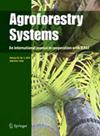Carbon credit revenue assessment for four shelterbelt projects following EU CRCF protocols
Abstract
The land use sector is a key area for climate mitigation efforts, as ecosystems’ carbon sequestration capacity provides opportunities not only for emission reduction but also for carbon removals and Carbon Farming. The EU Carbon Removal and Carbon Farming (CRCF) regulation offers new income opportunities for farmers and foresters on the voluntary carbon market. Establishing shelterbelt plantations is among the agroforestry activities recognized by the CRCF regulation. The carbon sequestered in the biomass and soil of these plantations can be traded on the voluntary carbon market created by the regulation. In our study, we projected up to 2054 the carbon sequestration potential of shelterbelt plantations planned at four locations in Hungary. Additionally, we quantified the associated greenhouse gas emissions generated during the establishment and maintenance of the plantations, following the protocols of the CRCF regulation. Based on these calculations, we determined the net carbon benefit eligible for accounting and the expected revenue from carbon credits. Our results indicate that the greenhouse gas emissions from machinery used during the establishment and maintenance of the plantations are negligible (only 0.5–0.7%) compared to the carbon sequestration achieved in the biomass and soil pools of the shelterbelts. Therefore, establishing shelterbelt plantations can be a profitable investment for foresters and agricultural producers across a relatively broad range of site conditions. Since the establishment of such plantations is financed by the Common Agricultural Policy, revenues from the voluntary carbon market regulated by the CRCF provide an additional source of income.

 求助内容:
求助内容: 应助结果提醒方式:
应助结果提醒方式:


